Do cyclists' bodies need a regular health-check MOT?
With Rambo-esque pluck, CW’s David Bradford lances a finger and spills blood in the name of journalistic enquiry — namely, do cyclists benefit from biomarker testing?
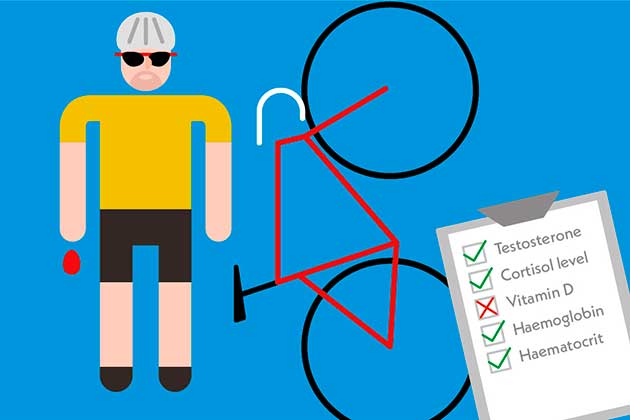
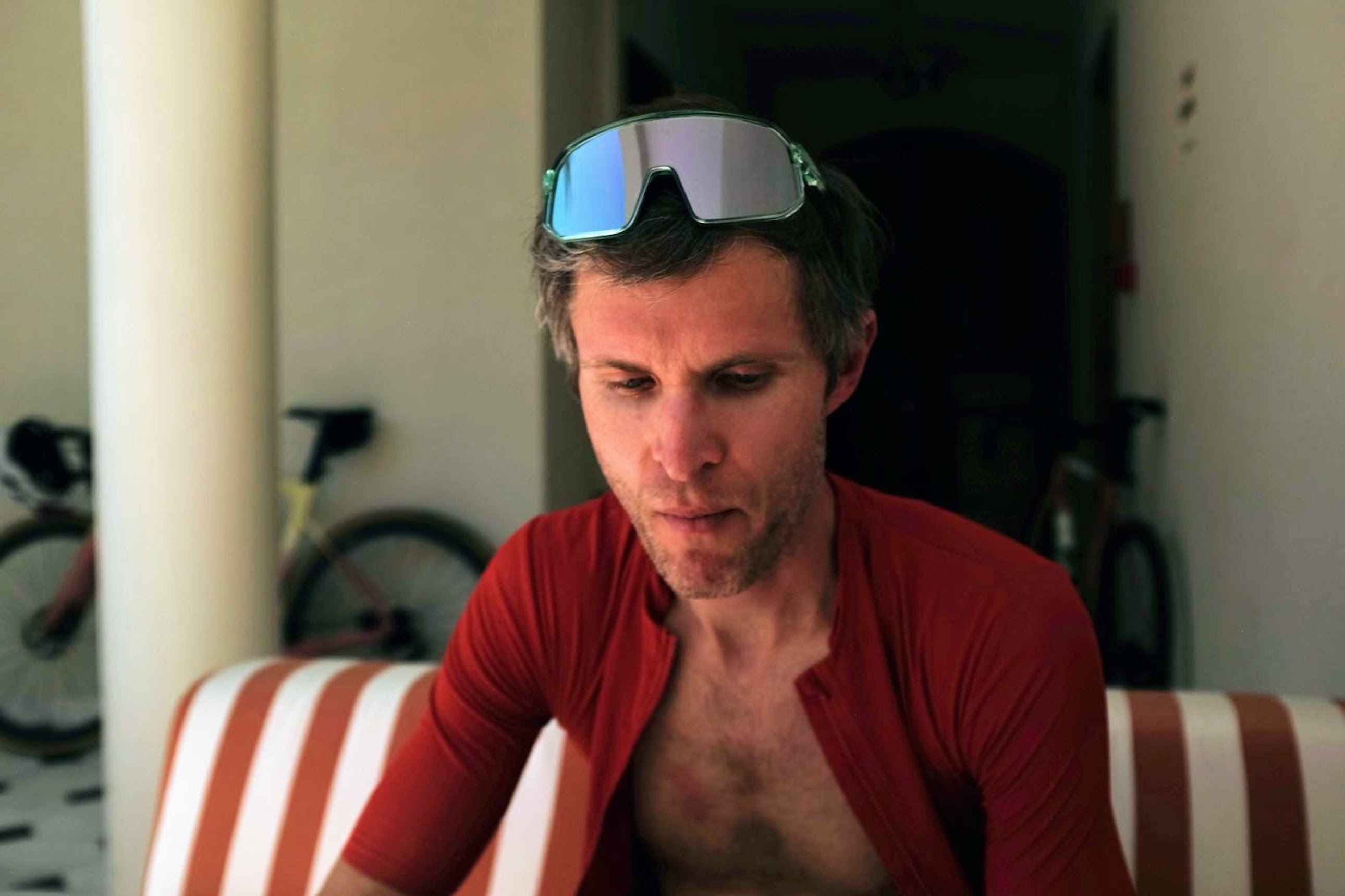
Cyclists are obsessed with output. We spend fortunes on hardware and sof tware to monitor power, heart rate and calorie burn, to track our rides and compare ourselves with others. Meanwhile, we scarcely give a passing thought to our wetware — that is, the systems inside our bodies that make this output possible.
Of the internal workings of flesh, bone and blood we seem prepared to carry on in ignorance, free from any data beyond the rudimentary “Ow, that hurts” or “Oh God, I’m so tired I need to stop”. Why do we settle for such paucity of knowledge? It’s not as though we have to, now that keeping tabs on our biology is easier and cheaper than ever.
These days, you don’t need to go via a GP to get your blood tested and analysed. You can prick a finger, take a sample of blood, send it off to a specialist company and have the results on screen in front of you (having been checked by a sports doctor) within 48 hours.
>>> 11 of the best fitness upgrades you should try
It’s a level of efficiency the overstretched NHS simply cannot match. For around £100, you can have the full complement of fitness-related biomarkers tested, potentially flagging up correctable deficiencies. The question is, what’s the likelier outcome: improved performance and peace of mind, or information overload and needless worry?
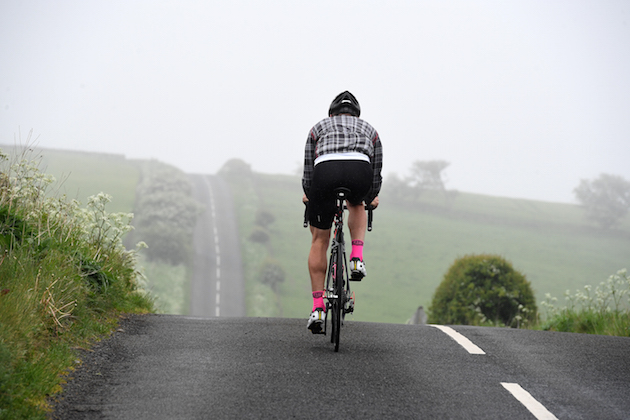
A new year means a chance to set big targets for 2019
To find out, I submitted myself for Forth Edge (forthedge.com) testing, and recruited two further guinea pigs, former national champions Brian Smith and Matt Bottrill. We each sent off a blood sample and then waited on tenterhooks for our biomarkers to reveal how well our bodies were functioning, hoping for revelations that would unlock new levels of fitness. Two days later, the results were in...
Guidance note: The normal ranges stated below are specific to Forth Edge; each provider’s ranges vary slightly depending on the analysis method used. The results listed below are only a small sample of the biomarkers tested by Forth Edge.
Get The Leadout Newsletter
The latest race content, interviews, features, reviews and expert buying guides, direct to your inbox!
Hormones
The most important hormone for performance for me as a male is testosterone. It’s difficult to overestimate the importance of this hormone for cyclists; it has major effects on almost all the vital ingredients of cycling performance: muscle strength, bone density, fat distribution and red blood cell production.
Production of testosterone tends to tail off as men grow older, and around one in 20 aged over 45 have a deficiency, manifesting as loss of strength, reduced sex drive, reduced muscle mass and fatigue (as a whippersnapper of 36, I should be OK). Low levels may also indicate overtraining, undereating or underlying medical issues, and should be assessed by a GP.
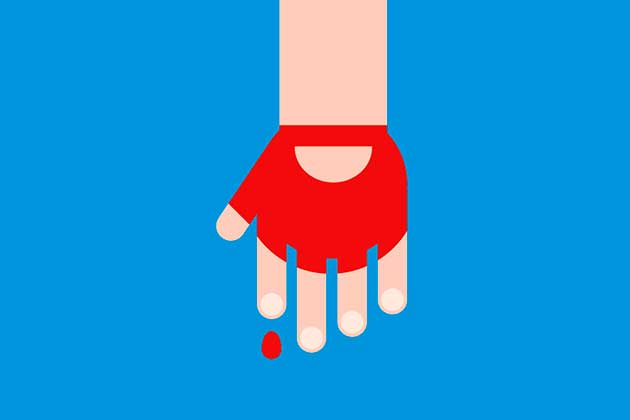
“Testosterone supports muscular health and haemoglobin,” says Forth Edge’s endocrinologist Dr Nicky Keay. “I’ve had some ill-informed cyclists say to me, ‘My testosterone is low — should I take something to raise it?’ The answer is no, because a) [exogenous] testosterone is on the WADA banned list, and b) your testosterone may be suppressed simply because you’ve been in heavy training.”
Women do produce testosterone but in much smaller amounts than men, and it’s not their number-one performance hormone. “For women we would take more interest in the female equivalent, oestrogen; regular periods are generally adequate evidence that oestrogen levels are healthy,” says Keay. “Irregular periods should be closely monitored — I recommend the FitrWoman app — and may require a visit to the GP.”
Key biomarker: Testosterone
Normal range: 8.6-29nmol/L
Normal range: 0.29-1.67nmol/L
My result: 29nmol/L - normal
I’m right at the top of the healthy range. Dr Keay assures me this is no basis for boasting… and unfortunately cannot be used as an excuse for testy behaviour!
Immunity and bone health
A wide range of vitamins, minerals and hormones are involved in maintaining the immune system and bone health, but two of the most important are vitamin D, the so-called sunshine vitamin, and calcium.
“In extreme cases, vitamin D deficiency can lead to rickets,” says Dr Keay, “but that’s very rare in the developed world these days. However, because it’s so important for muscular strength, bone density and functional immunity, for an athlete, any sub-optimal result should be taken seriously and acted upon.”
What counts as too low for a cyclist?
“Studies have shown that athletes who have levels below 90nmol/L are more likely to fall ill in the winter. What’s more, my colleague did a great study on dancers showing significant increases in quad strength after taking a vitamin D supplement over winter.”
Dr Keay advises taking a vitamin D supplement from October to March, when you’re unlikely to get sufficient exposure to strong sunlight. “An athlete should aim to maintain around 100nmol/L all year.”
It came as a shock, then, to find out that my level is a lowly 48nmol/L — not merely sub-optimal but below the NHS’s minimum healthy level and less than half the target figure for athletes. On Keay’s advice, I start taking a supplement.
Key biomarker: Vitamin D
Normal range: 50-175nmol/L
My result: 48.4nmol/L - deficient
Yikes, I’m deficient! — time to order a supplement (see below), which will hopefully get my vitamin D back to the recommended athlete level of around 100nmol/L. Who knows, I might even see a performance boost.
Calcium combines with albumin to make the bioactive form, categorised here as ‘corrected calcium’. It’s this form that matters most, being crucial for bone health and muscle function.
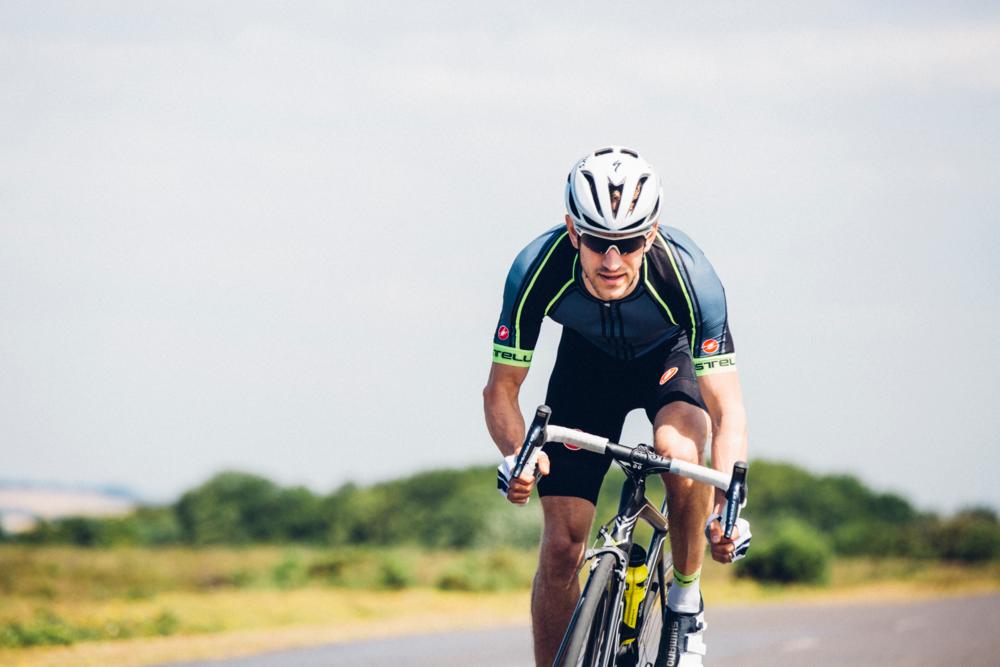
Calcium is found in dairy products, green leafy vegetables, bread, soya and nuts. Provided you’re eating healthily, you’re unlikely to be deficient — with one caveat from Keay: “Calcium goes hand in hand with vitamin D — if your vitamin D is low, your body may start breaking down your bone in response. Calcium deficiency is quite rare but it’s worth checking.”
Key biomarker: Corrected calcium - bioactive
Normal range: 2.12-2.52mmol/L
My result: 2.34 - normal
My calcium levels are normal, it’s just my vitamin D that needs sorting.
Recovery
The key steroid hormone for monitoring recovery is cortisol, which also plays important roles in the regulation of blood glucose, immune system and metabolism. A cyclist who persistently overtrains is likely to play havoc with their cortisol levels, inducing a boom-and-bust cycle, leading to sleep problems, poor recovery and a drop-off in performance. Cortisol is slightly tricky to monitor, in that it naturally fluctuates during the day — it’s important to test at the same time of day, ideally in the morning.
Key biomarker: Cortisol
Normal range: 133-537nmol/L
My result: 232nmol/L - normal
I’m in the middle of the healthy range — no stress!
Oxygen transportation
To be a successful endurance athlete, your blood has to be efficient in transporting oxygen. A popular method among cheats is to boost the number of red blood cells in their bodies by using EPO or transfusions. Blood count biomarkers are not only for dopers, however; we clean riders need to make sure our blood is functioning optimally. The first metric Dr Keay draws attention to is haemoglobin, the iron-containing protein that carries oxygen around the body.
“If your haemoglobin is below the normal range, it may indicate anaemia — not good. You would certainly want to find out the cause.”
The next most important biomarker, haematocrit, is a measurement of the volume of space in your blood made up of red blood cells. It can fluctuate depending on hydration levels.
>>> Detraining: The truth about losing fitness
The difficulty with these oxygen-transportation metrics is that they’re all very interrelated, and so analysis is complicated. If you have a level that’s outside the normal range, you would need a specialist to analyse the markers together, checking haemoglobin against, for example, folate and vitamin B12. If tested with Forth Edge, this is where Dr Keay would step in. Isn’t there a risk, I ask her, that athletes might take it upon themselves to self-medicate?
“I suppose, yes, an athlete might jump to the conclusion that more is better — for example, that more haemoglobin means more oxygen. To a certain extent, that may be true, but only within the normal range. If you breach the upper end of the range, your body can’t deal with that and you’d be in a potentially dangerous disease state.”
Key biomarker: Haemoglobin
Normal range: 130-170g/L
Normal range: 120-160g/L
My result: 151g/L - normal
Key biomarker: Haematocrit
Normal range: 38-50%
Normal range: 35-47%
My result: 44.8%
My main oxygen-carrying metrics are all smack-bang in the middle of the normal range — Dr Keay assures me my blood count markers are all fine and dandy and requires no action or follow-up.
Conclusion
Having digested my results, what have I learned? The standout finding for me was that I had a vitamin D deficiency — easily addressed by taking a supplement. This could provide a significant (albeit not dramatic) boost to my strength and fitness.
On the basis of this one discovery alone, the test of my biomarkers seems totally worthwhile; I’m prompted to correct a problem I’d known nothing about — knowledge really is power, and I’m a happy customer.
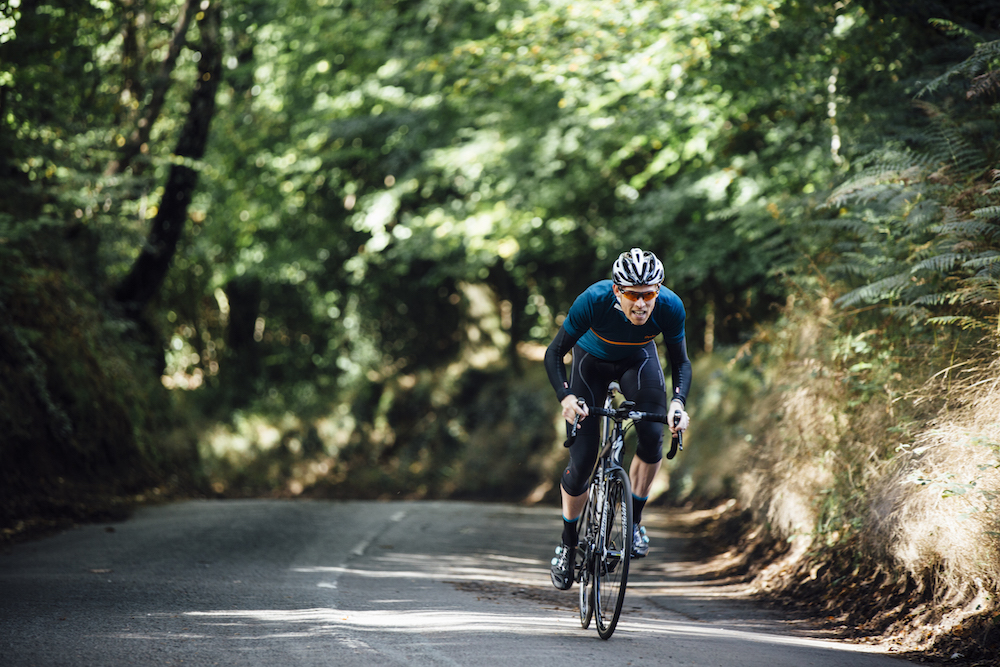
You could take a more critical stance, though, and argue that the test wasn’t really essential for me. If I’d already been taking a maintenance dose of vitamin D — as per NHS guidelines — my test would not have provided any vital or immediately useful information.
And bear in mind, there is a stand-alone test for vitamin D (£39 via forthwithlife.co.uk). All my other biomarkers were within the normal range; low vitamin D, my only ‘actionable’ finding, is unique in being easy to self-correct to the optimal level, whereas most other biomarkers, if outside the normal range, require specialist follow-up.
“That’s true,” says Dr Keay, “but repeating the test and checking biomarkers every few months would allow you to build a picture of what’s normal for you, like your own biological passport, and that’s even more useful.
“Without this information, you risk getting more and more tired or failing to make the most of your training without understanding why. The pros definitely outweigh the cons.”
Raising my Vitamin D
Less than 20 per cent of the body’s vitamin D comes from our food; the rest is made during exposure to sunlight. “During the British winter,” says Dr Keay, “you could walk around outdoors naked the whole time and still not get enough sunlight to maintain optimal vitamin D!”
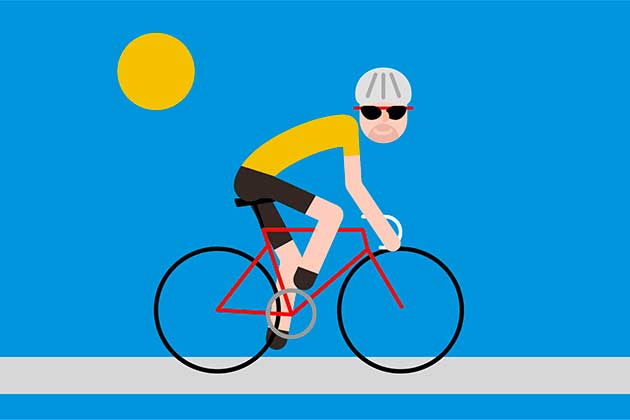
Public Health England advises that all adults consider taking a daily supplement containing 10mcg (400iu) of vitamin D, “particularly during autumn and winter”. With my vitamin D at a lowly 48nmol/L, I needed something more potent, so I ordered in a haul of supplements from three leading brands, SiS, Healthspan and Proto-col. When they arrived, I was surprised to see the high dosages: 5,000iu per tablet for the SiS and Proto-col products, 1,000iu for the Healthspan. Isn’t this too much?
“Having tested at a low level, I would advise taking a loading dose of 5,000iu per day for one week, then 1,000iu as a maintenance dose,” says Keay. “Ideally, you’d re-test in two or three months’ time to check on progress.”
How to get tested
Forth Edge offers several packages, testing various biomarkers depending what you most want to monitor — your endurance, power, recovery or training load. The packages range from £79 to £149, and the recommended test frequency is once every three months.
Medichecks (medichecks.com) offers a Health and Fitness package, testing 31 biomarkers, for £119. Both offer free initial review by a doctor, with
optional follow-up consultation.
Dr Alex Gill
‘It’s all about trying to make sense of big data’
CW spoke to cycling GP Dr Alex Gill from Lavender Hill Practice, Battersea, to ask for his independent opinion on direct-to-consumer biomarker testing
Should athletes buy consumer biomarker tests, rather than relying on their GP?
That’s a dilemma. As GPs in the NHS, we’re there to detect and treat pathologies and illnesses, but I still advocate people going to the GP to get these things checked out. I recently ordered a test for a young rower that picked up low testosterone, and I was able to refer him to an endocrinologist with sporting expertise.

But if I went to a GP asking for a blood test to help optimise my cycling performance, surely they’d show me the door?
It varies depending which GP you speak to. Officially, the NHS is a publicly funded service for clinically indicated investigations and treatments. So if someone came in saying, “I’m just not feeling quite right and not riding as well as last season,” most GPs would not order blood tests. Personally, I decide on a case-by-case basis, on individual merits.
And if your GP says no, is a consumer test worthwhile?
Provided you have expert interpretation of the results, then potentially yes. Biomarkers are often presented to the consumer as 100 per cent guaranteed to give you all the information you need to optimise your training, but they really aren’t. Many biomarkers represent a best guess; there are many reasons, often interrelated, why a certain level may be up or down, calling for careful assessment of the context, the individual’s history and circumstances.
How to maximise the benefit if you do buy a test?
These tests are great at picking up anomalous levels clearly outside the healthy range, which can then be followed up with a GP. But if a biomarker is merely sub-optimal, you’re almost obliged to keep retesting at regular intervals, comparing results against your personal benchmarks rather than against universal standards. That would get expensive, and you’d need to be very committed… It’s all about trying to make sense of big data — classic science-meets-consumer territory, where there is more and more data needing more and more interpretation. Don’t rush in!
Matt Bottrill
‘If only we’d had these tests years ago’
TT ace turned coach Matt Bottrill (mattbottrill-performancecoaching.com) was tested by Forth Edge as part of CW’s research. We caught up with him to discuss the results:
“The only thing the test flagged up for me was high calcium. I have changed my diet and eat more dairy these days, so that probably accounts for it. I have Forth Edge tests every three months, and the main things I look at are vitamin D, calcium and testosterone levels.
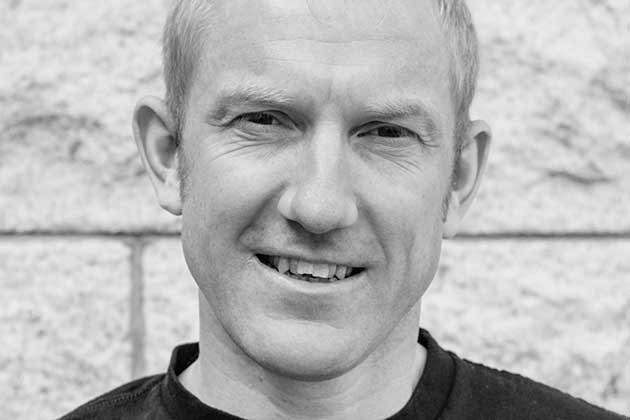
“A test I had after suffering from tonsillitis showed some metrics were out, indicating I needed more recovery. I think it’s really good getting an initial test just to make sure there is no deficiency. If you’re deficient in vitamin D, say, you want to be able to correct that.
“The key part is how you interpret the information. We work with [dietitian] Renee McGregor; I’m not sure how much support you would get from your local doctor, but If you see a red flag, you need to go and speak to a specialist.
“Back when I was part of British Cycling’s performance programme and slipping into overtraining syndrome, this testing would have really helped me. I wish it had been available back then. Especially at the top level of the sport, it’s a good way of making sure you don’t overdo it.
“The main thing, as with all complex information, is understanding it. With biomarkers, it’s best to gather data over a period of time, a year or season. If you’re clever with it, you can spot the points where you overcooked it.”
Brian Smith
‘It’s the final piece of the jigsaw’
Former national champion Brian Smith, 51, has been having quarterly Forth Edge blood tests for two years. CW asked him how he has benefited:
“When I was a pro, testing was left up to the team doctors, but a lot of semi-pro and amateur guys don’t have this type of access. Getting blood tests on the NHS is a lengthy process, so to be able to do this [Forth Edge] type of test at home and get the results within 48 hours is fantastic.
“There’s intense focus on power meters these days, but I think testing of biomarkers is the final piece of the jigsaw. If you go out and your power is OK but you just don’t feel right, there is something wrong in the engine room. If I’d had these tests during my career, would I have performed better? Yes, I think so.
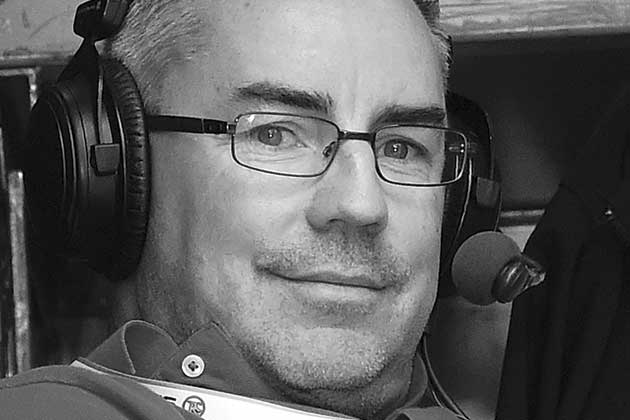
“Now, as a 50-year-old, my priorities have changed, but the testing prompted me to have tests with a specialist which showed I have a genetic predisposition to high cholesterol. I’ve now changed my diet to suit and am determined to bring my cholesterol down.
>>> Get better at climbing hills: top tips to speed up your ascents
“The tests also showed I have low vitamin D. I hadn’t realised I needed them, but I’m on vitamins now, and I’m feeling better for it.
“I get tested every three months — you’re talking maybe £400 a year, which isn’t much compared to a power meter or set of aero wheels. I’ve taken the time to learn about why particular values are up or down. It’s about educating yourself on your own health, and I can’t stress enough how important that is.”

Thank you for reading 20 articles this month* Join now for unlimited access
Enjoy your first month for just £1 / $1 / €1
*Read 5 free articles per month without a subscription

Join now for unlimited access
Try first month for just £1 / $1 / €1

David Bradford is features editor of Cycling Weekly (print edition). He has been writing and editing professionally for more than 15 years, and has published work in national newspapers and magazines including the Independent, the Guardian, the Times, the Irish Times, Vice.com and Runner’s World. Alongside his love of cycling, David is a long-distance runner with a marathon PB of two hours 28 minutes. Having been diagnosed with retinitis pigmentosa (RP) in 2006, he also writes about sight loss and hosts the podcast Ways of Not Seeing.
-
 'It took everything' - Puck Pieterse outclimbs Demi Vollering to win La Flèche Wallonne
'It took everything' - Puck Pieterse outclimbs Demi Vollering to win La Flèche WallonneDutch 22-year-old shows Classics pedigree with first one-day victory
By Tom Davidson
-
 Tadej Pogačar flies to dominant victory at La Flèche Wallonne
Tadej Pogačar flies to dominant victory at La Flèche WallonneSlovenian takes second win at Belgian classic ahead of Kévin Vauquelin and Tom Pidcock
By Tom Thewlis